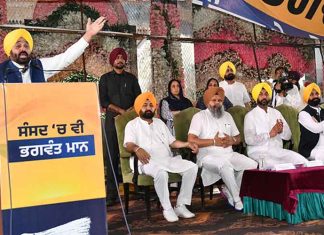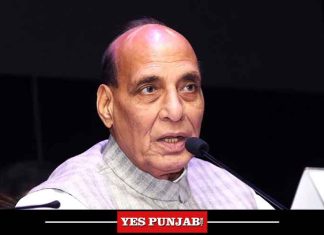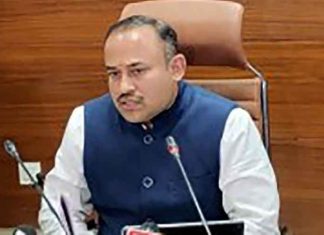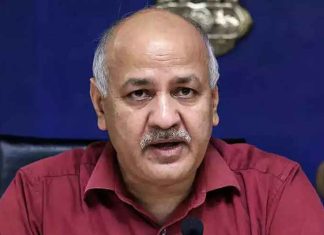The last few weeks have been notable from a global rates environment standpoint, particularly in developed markets. Markets across many such geographies have brought forward their expectations for interest rate hikes, as unprecedented supply side shortages (including energy shocks) meet equally unprecedented fiscal stimuli in some of these economies, thereby challenging the ‘transitory’ narrative on inflation.
Developed markets, at least in the near term, are facing the kind of inflation one normally associates with their developing counterparts. Front end rates, which are most susceptible to interest rate hike expectations, have risen sharply in many geographies over the past month; more than doubling in some cases over this relatively brief span.
A notable aspect of this phase has been the fall in long term yields and the consequent flattening of the yield curve in many such places. In the US for example, the gap between 30 year and 5 year government bond yields has less than halved from what it was in early May of this year.
This seems to be market’s warning that even as it expects the Fed to start normalising sooner than earlier expected (market is now pricing in 2 rate hikes next year, on the heels of the completion of the so called taper program), it has if anything brought down its expectation of peak rates in this cycle.
This is possibly on the back of evolving views on longer term trend growth rates, which in turn could be on a re-assessment of the durability of growth multipliers from the stimulus, the longer than expected squeeze on the supply side, the evolving Chinese policy priorities and associated lower expected growth rates there, and expected relatively tighter financial conditions over the next couple of years than before. There may also be ‘technical’ factors in play here, so that the extent of flattening may be getting exaggerating. However, the underlying message as summarised here may still hold relevance.
India also hasn’t been able to escape these global disruptions. However, with the government bond supply for the second half of the year being much better controlled and due to the global nature of this sell-off, the brunt has been felt by the swap curve. Across tenors (1 – 5 years) swap rates have risen by a very notable 50 bps or so since mid-September. And this after the October policy not yielding to the hawkish end of expectations and with RBI leadership (Governor and Deputy Governor) not deviating much from the previous script in the subsequent policy minutes as well.
When everyone is expecting
To say that interest rates have to rise is stating the obvious. Supply side pressures are real, India’s growth is coming back strongly, and we cannot be immune to global developments. However, while this expectation makes for a good summary headline it is equally important to scratch beneath the surface and enter the realm of nuance when one is talking about portfolio constructions and optimal strategies.
First, and what is noteworthy about these global developments as highlighted in yield curve movements above, is that market is not resetting higher the peak policy rate expectations. If anything these are being brought down, likely for the reasons mentioned above. In that sense, this is a very different global cycle than 2003 – 08 and will likely by much shallower marked with significant global growth volatility from quarter to quarter. Thus, our lower-than-last-cycle peak rate expectation probably holds even for the arguably most near term over-stimulated large global economy.
Second, India’s realities are somewhat different than many other economies around the world. We rush to clarify that this observation is not meant to justify insulation to global developments (after all emerging markets will get constrained by tightening in developed economies) but to merely draw some distinctions around the likely path of policy ahead.
In our view, the defining distinction for the intensity of the inflationary shock and its probable persistence is the quantum of the fiscal response administered as Covid response. As is well known US saw an unprecedented fiscal stimulus over two calendar years, arguably much in excess of the size of the problem. Some other economies were relatively more modest in their response, but standalone still quite significant. Even some emerging markets went aggressive with their fiscal expansion.
In contrast India’s response was very nuanced last year focusing on direct spending for welfare of the most susceptible citizens while using credit and liquidity measures largely for industry in general. With the crisis stabilizing, the fiscal stance has turned even more nuanced this year with the year to date deficit the narrowest in many years on a variety of parameters. Given this, while supply side pressures are very much showing in India’s inflation as well, CPI isn’t on a runaway trajectory and second round permanent effects in terms of expectation setting are likely to be much more contained.
This, and RBI’s aggressive accumulation of forex over the past year and a half, both provide some cushion to the central bank in charting a more ‘localised’ path to normalization of policy. It is also for this reason that we will not attempt to force-fit the bearish flattening of the curve in some of the advanced markets to India. The base case remains that in India’s context the absorption of gross duration supply is likely a greater dynamic to fear than the monetary policy normalisation ahead.
Hedges aren’t cheap
As noted above, interest rate swap yields have moved up sharply over the last month and a half. At current levels, the swap curve is now pricing in approximately 150 bps rise in the effective overnight rate (EOR) over the next 1 year. Looked at another way, it is implying some hike in EOR (whether through reverse repo rate hike initially or repo rate later) in every policy meeting for the next year.
If true this will take the EOR to something like 5 per cent in a year. Note that as of date currently even the most hawkish member of the monetary policy committee (Prof. Varma) is arguing for EOR at 4 per cent but hasn’t articulated yet a path beyond that pending greater traction to the recovery. Furthermore, the swap curve is fairly steep beyond 1 year as well thereby implying a relatively much higher effective 1 year forwards even beyond this reasonably aggressive normalization pricing for the next 1 year.
This means that using swaps now to hedge oneself against the inevitable rate hikes will only offer real protection if the quantum of such hikes turns out to be even more aggressive than what has been described above. Barring tail risks fructifying, this is extremely unlikely.
To reiterate, our view remains that the EOR will likely peak out in this cycle approximately 100 bps or so below that in the last cycle. If this view turns out to be true, then using swaps to hedge oneself loses money from hereon. Of course, this is not to say that things can’t overshoot in the near term, especially in sympathy to the current one-way global narrative and the extra-ordinary current volatility in energy prices.
Floating rate bonds offer a more complex picture. In particular, market’s most attention has been caught by the long tenor government bond floaters (FRBs) where coupon is linked to 6 month treasury bills. While the floating benchmark and the method of calculation has been fixed, market has been expressing its view on the upcoming rate cycle via compressing the spread over treasury bill available on such floaters.
Note that while coupon setting itself is 6 monthly and hence can be considered as 6 month risk, the price impact on change in spread over treasury bill is consistent with the risk profile of the entire maturity of the instrument. Over the past few months, this spread has compressed thereby handing over smart price appreciation to its holders. This appreciation has looked exceptionally handsome as many of the mutual fund schemes that hold these instruments are pegged to shorter term benchmarks where such quantum of price gains is otherwise extremely hard to come by.
However, now that market expectation is probably fully priced with respect to rate hikes it is turning more difficult for mark to market gains to continue. Also, it is very logical for government to use these instruments to elongate the maturity profile of its outstanding stock, given the deluge of maturities that are coming over the next few years.
Market’s appetite for fixed rate long duration is limited and such bonds are a good avenue for the issuer to elongate maturity (since these are long maturity bonds but only the spread component is linked to long maturity risk for the investor). This is already happening thereby removing some of the scarcity premia associated with these bonds. More fundamentally, our view remains that it is duration supply rather than the quantum of hikes that need to be feared.
If true, this means that there will still likely be enough steepness in the yield curve even once RBI is done with the rate normalization (we have elaborated on this point before so won’t get into the detail now). Thus a long tenor instrument linked to a very short tenor benchmark isn’t of particular value in our framework of thinking. This needs a bit of elaboration.
The first few resets will indeed go up substantially as rate normalization is underway since the most susceptible part of the curve remains that which is most closely linked to the overnight rate (money market, treasury bills and so forth).
However, given our peak policy rate expectations, it is also likely that the peak treasury bill rate in this cycle will be substantially lower than in the last. Put another way, it is possible that even the peak effective yield for the floating rate bond (at least over the foreseeable forecast horizon) isn’t much higher than what the equivalent maturity fixed rate bond is already offering on a daily basis.
This means that the floater will not end up compensating later for the loss of carry that it is offering now. That said, 2 caveats are in order: One, as mentioned above the duration risk on the floater is lower than equivalent fixed rate bonds. Two, there may be some natural demand for the instrument from balance sheets in a rising rate scenario.
A final observation before we turn away from floaters: we would advise against force-fitting spreads available here to international equivalents. This stretches the assumption of ‘ceteris paribus’ or ‘all other things being equal’ to breaking point.
Further, such force fitting can yield a variety of remarkable conclusions many of which may turn out to be quite far-fetched. Purely as an illustration, even after the recent flattening the spread between 5 year and 10 year US bond yields is approximately 30 per cent of the yield on the 5 year. Can one extrapolate this to India and then say that 10 year yield should be 170 bps over that on the 5 year? Probably not, and this is certainly NOT the view here even as we continue to be overweight the 5 year for reasons explained previously.
Conclusion
The recent few weeks have been extremely tough for global rates, especially in some key developed markets. India has had its rub-off as well, as should be expected since it’s hard to think about our markets in isolation. That said, the differentiator in our view is our more nuanced fiscal response and the laser-focus from RBI in accumulating a forex defense. While even this doesn’t insulate us, it does provide certain more degrees of freedom to monetary policy.
After the recent sharp rise in yields, the interest rate swap market is no longer a cheap or effective way to hedge against the normalisation already underway. For a variety of reasons mentioned above, neither probably are long tenor floating rate instruments. At any rate liquidity in all sorts of floaters is fickle at best and hence these instruments can’t be a very large exposure set for open ended funds.
Rather, and we come back to our favourite theme here, bar-belling may remain the best way to navigate these times. Thus intermediate maturity points can be clubbed with near cash to arrive at an appropriate average maturity. How intermediate the maturity and how near the cash will of course depend upon the mandate of the particular fund or risk profile since bar-belling can be done via various iterations.
For longer horizons or more aggressive profiles, the view can be expressed as just a plain long position in intermediate maturity 4 – 6 years (this is what we have broadly been pursuing in our active duration bond and gilt funds). More specifically, the naturally thought of defense of hiding in money markets may not work (as has already been the case for some time now) while floating rate (synthetic or natural) may no longer be as effective as the headline description may indicate. (Agency)
Subscribe to YesPunjab Telegram Channel & receive important news updates






































































